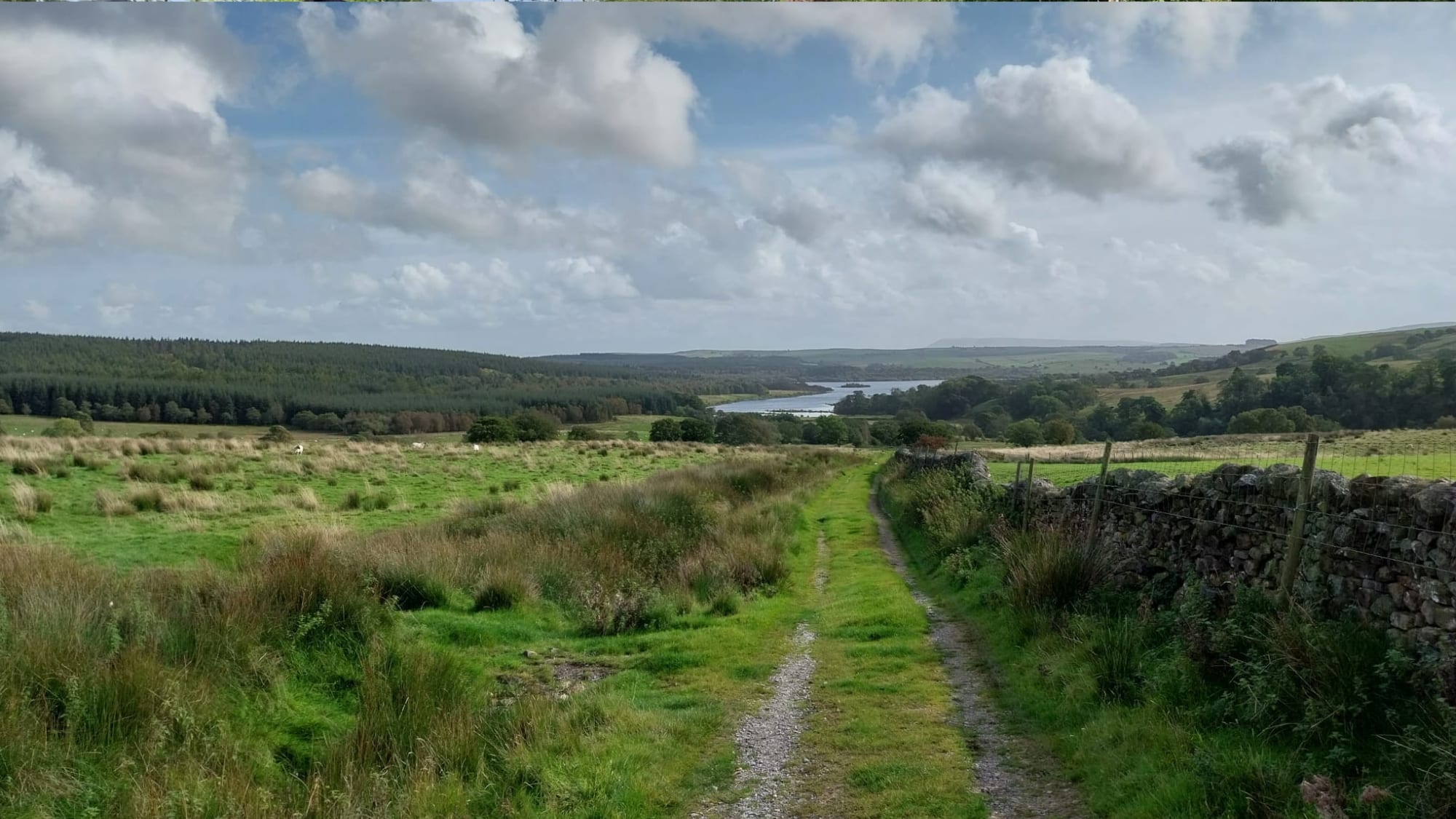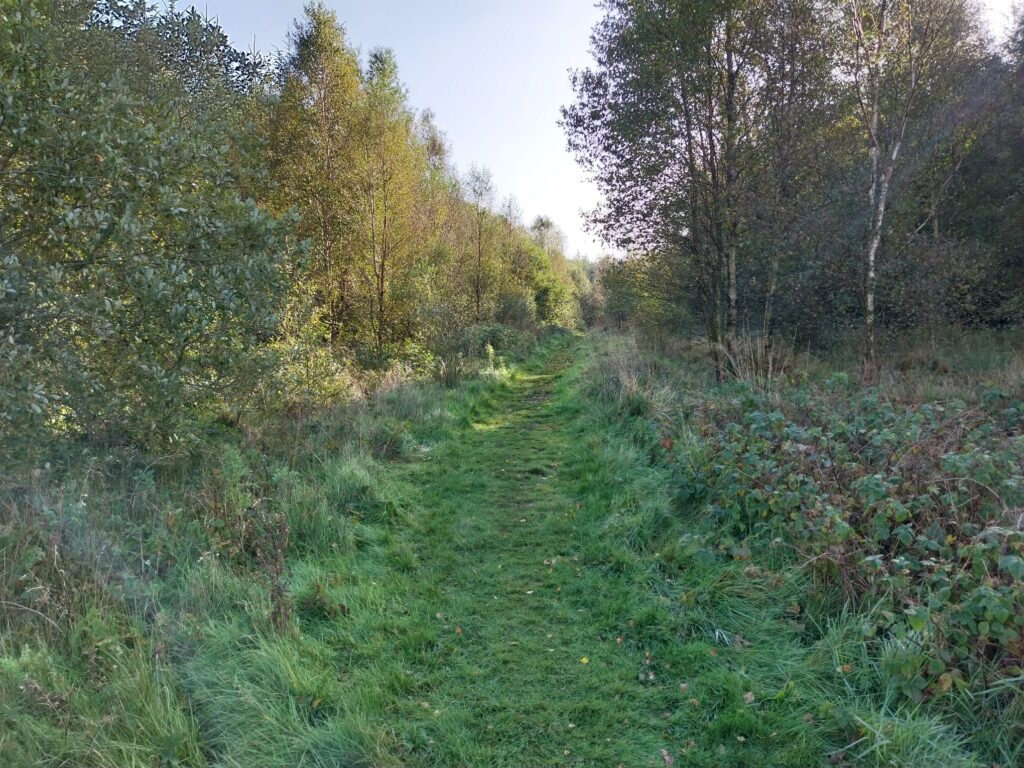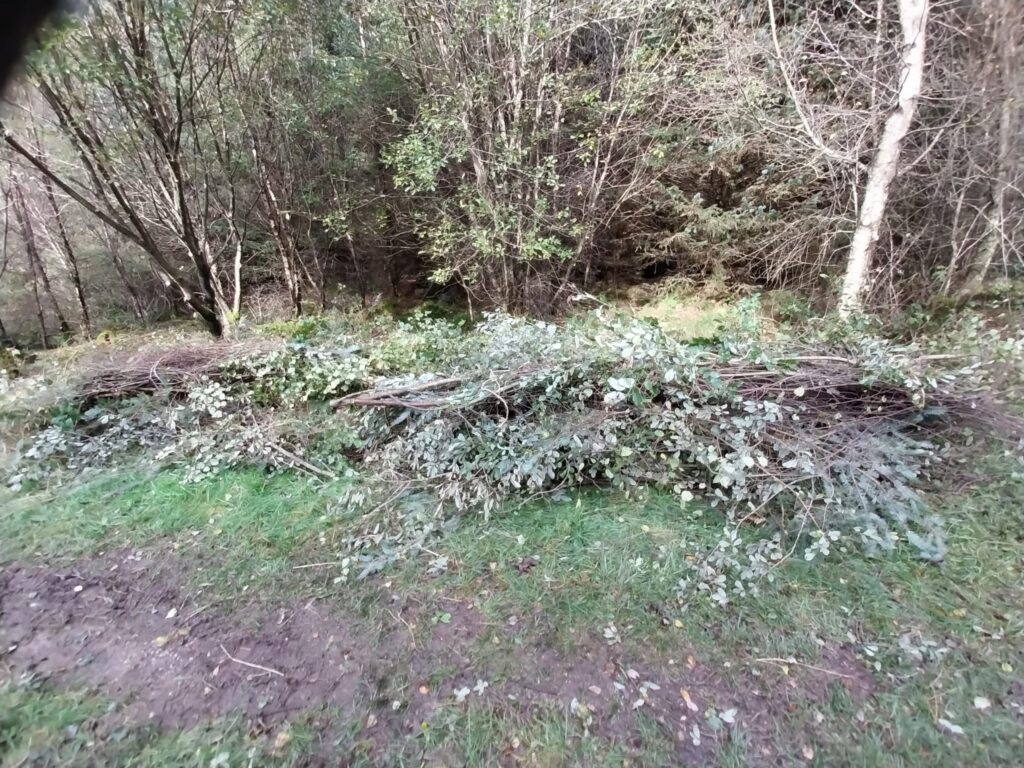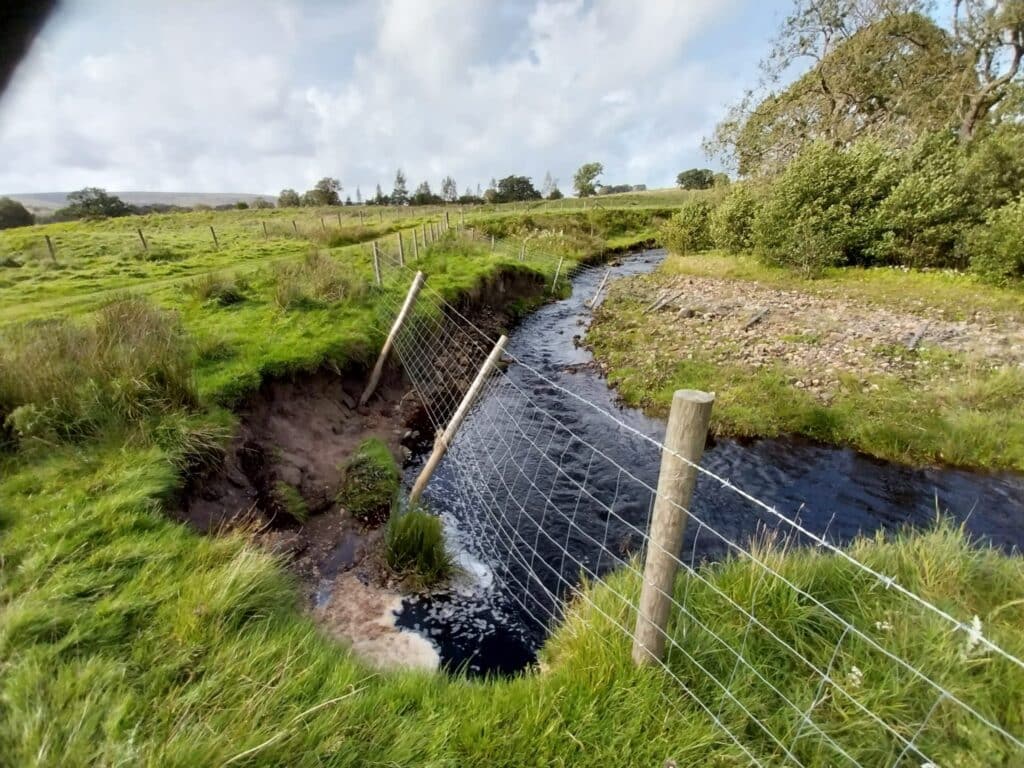
Hasgill Beck Brash Bundling
Ribble Rivers Trust is embarking on an exciting project to restore the banks of Hasgill Beck, near Stocks Reservoir and Gisburn Forest. The Hasgill brash bundling project aims to combat severe erosion and enhance the natural beauty and biodiversity of the area.
Located in the picturesque landscape of the Forest of Bowland, this project aims to protect, preserve, and restore this valuable natural ecosystem. The riverbanks in this area have been subject to significant erosion. In turn, this is leading to ecological imbalances and the loss of vital habitats. Ribble Rivers Trust is stepping in to make a difference.
Now, before we go any further, we need to say a massive thank you to our volunteers, who are all brash bundling experts! Age UK Lancashire also deserve a very special mention, as they organised a door to door Christmas tree collection, which raised money for their work, whilst providing us with brash!

As a bonus, we’ve also worked with Forestry England to identify sites within the forest that would benefit from some modification. This means that the brash we’re using is coming from right next to the riverbank we’re trying to improve. Plus, it is helping to create woodland rides and glades, which will benefit many marginal woodland species.
The project involves the strategic placement of brash bundles along the eroded riverbanks. Brash, which consists of tree branches and vegetation debris, is sourced from nearby woodland areas, creating a sustainable and eco-friendly solution. Not only does this effort protect the riverbanks from further deterioration, but it also enhances the surrounding woodland.
So, what is brash bundling?
Brash bundling is a river conservation technique that utilises natural materials to protect and stabilize riverbanks.
The first job is to collect branches and other woody debris. Our brash is usually sourced from local woodlands and plantations. To make sure we don’t harm any habitats we always aim to collect brash from coppiced woodlands, woodlands that are managed for forestry, or woodlands that need maintaining and opening up. This sustainable practice minimizes the impact on other ecosystems.
Once we have our brash, we then create the bundles. Our team gathers the brash together to form the bundles, which are a little like small haystacks. Meanwhile, untreated posts are driven into the riverbed. Now, we place these bundles at the edge of the river where the erosion is happening. To make sure we don’t lose the bundles, we tie the brash to the posts to stop the bundles from drifting downstream.
Now, we can stand back and watch as the strategically placed brash bundles do their work! Our little brash bundles form a barrier in front of the riverbank that absorbs and deflects the energy of the flowing water, reducing erosion. Additionally, they provide support to the banks, preventing further collapse. Eventually, sediment from the river will start to build up and get trapped within the bundle structure, helping to build the bank back up.
Over time, the brash bundles will also naturally degrade and decompose. As this happens the organic material will enrich the soil and provide a stable foundation for the growth of native vegetation. This process contributes to the long-term health and stability of the riverbanks.

Is river restoration really that important?
Of course! Natural rivers are the best rivers, so we always aim to restore rivers and ensure they’re as close to nature as possible. As you would expect, this is sometimes easier said than done. However, brash bundling is a pretty natural solution.

Natural and healthy river ecosystems support a diverse range of flora and fauna. By stabilizing the riverbanks, the project creates vital habitats for fish, insects, birds, and other wildlife. These changes will also attract species that rely on our river environments. Plus, if we can stop or slow erosion, we can also reduce the quantity of soils and sediments in our rivers. This greatly benefits species such as Atlantic salmon, who require quite specific conditions for spawning.
It’s not just river residents that benefit. Brash bundling can even help mitigate the risk of flooding by reducing erosion and slowing down the flow of water. This can protect local communities, infrastructure, and vulnerable river habitats.

